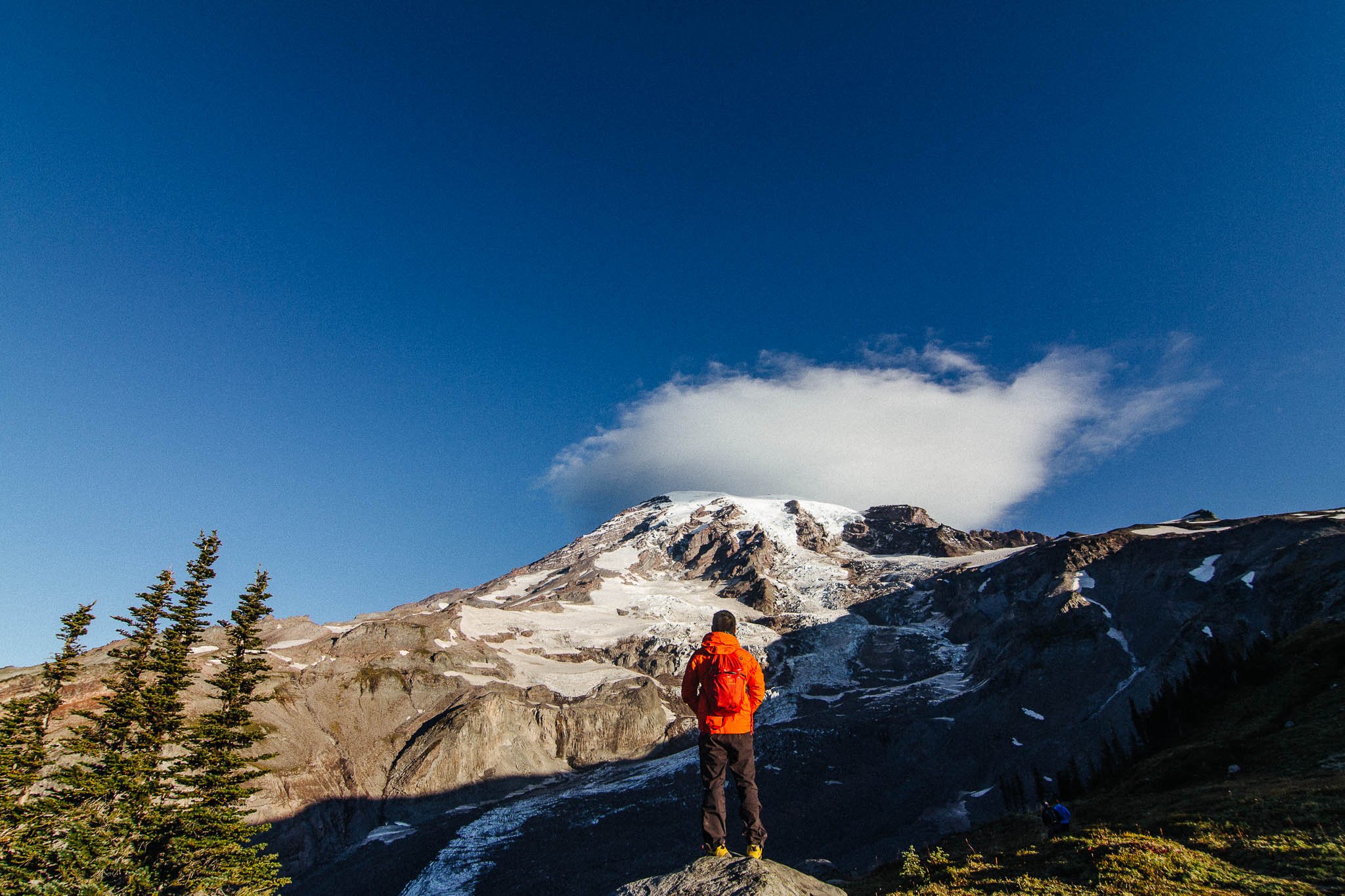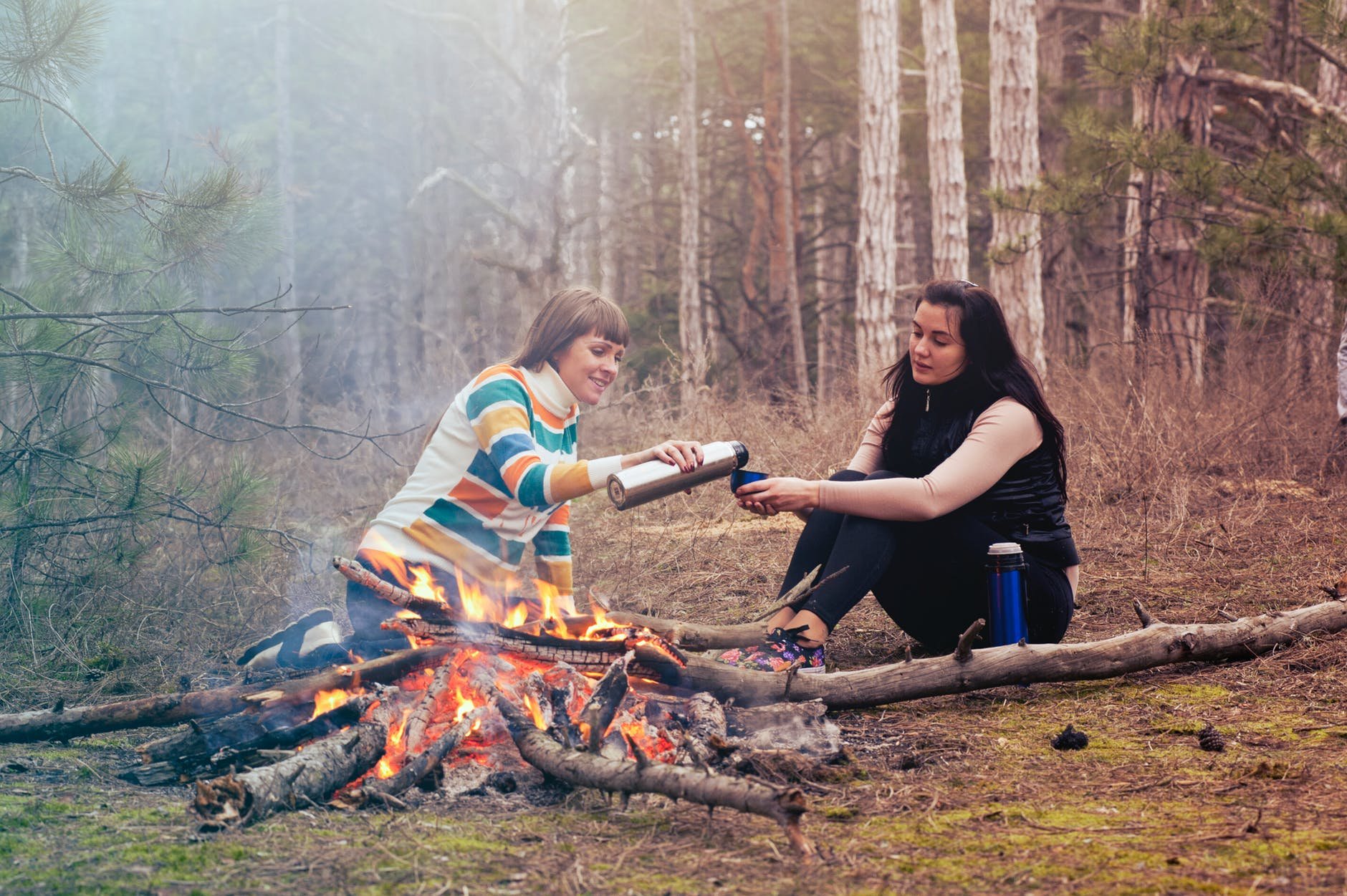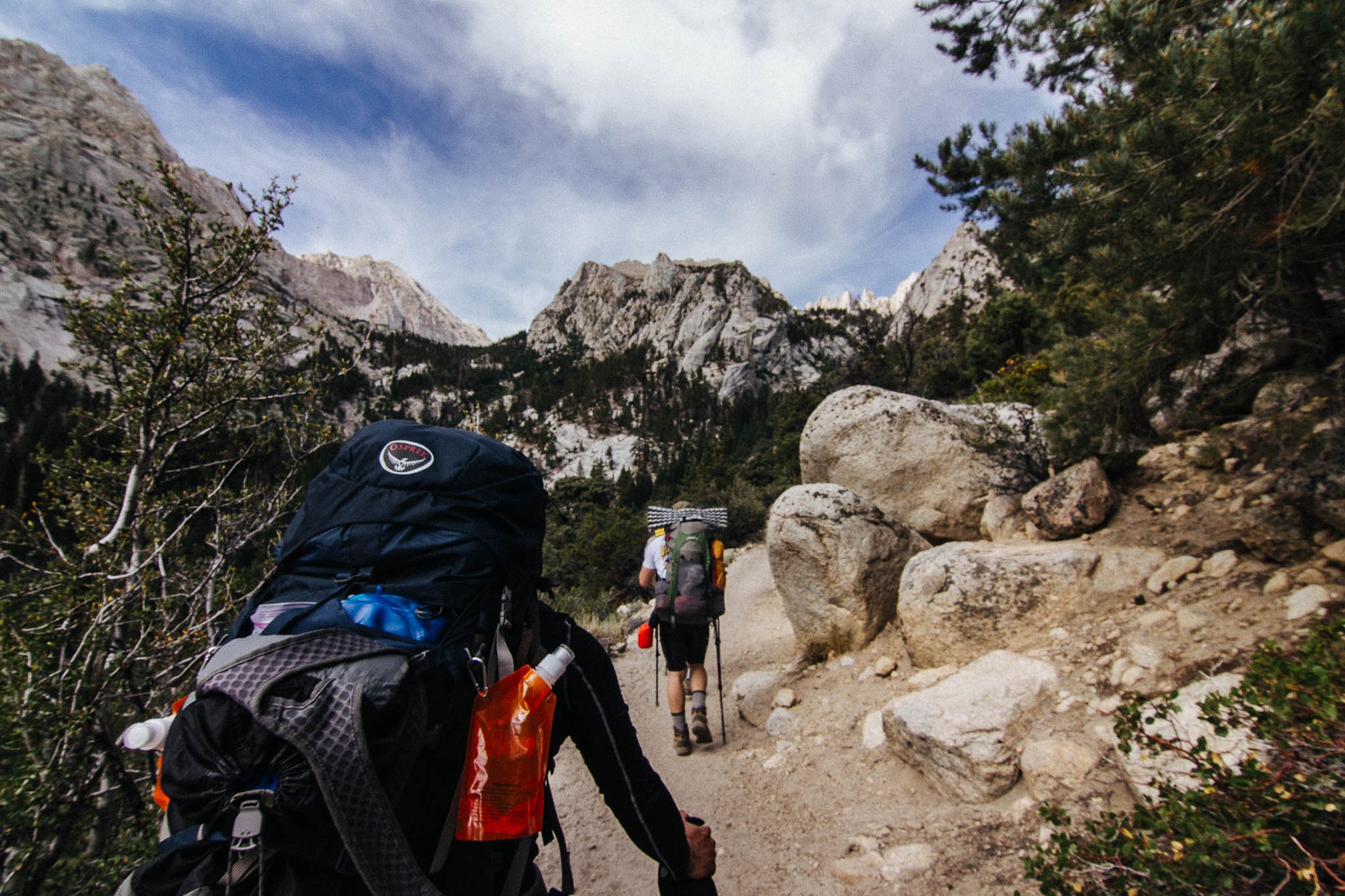
Whether you’re going on a short one-mile hike or an intense 14-mile day hike, planning which hiking food to bring for your trip can be the difference between an amazing day where you reach the summit full of energy or having a miserable day where you have to turn around due what you ate. This article will help you plan hiking food throughout the day to keep you energized and happy while out on the trail.
What are my options for hiking food during my hike?
There are a variety of options for hikers and it really depends on your situation, will you be doing a short hike to the local waterfall where weight doesn’t matter? Will you be going on a 4,000-foot elevation gain 12-mile hike to see the valley views? You should still be strategic with what you bring out on the trail even if you’re having a more leisurely day. When you’re hiking you’re pushing your body physically and need the right nutrition to keep you fully energized on your hikes.
Trail Bars
Trail bars are the fastest and convenient way to get calories in. Trail bars offer a variety of flavors and textures in a compact form. Trail bars are the perfect on the go snack and you have many options to choose from.
Jerky
Jerky provides an awesome option if you want a food that’s high in protein and low in fat. The benefits of jerky are it is very lightweight, gives you a new texture, has fantastic flavor, and very effective cost-wise for the amount of protein you’ll get.
Spreads
When we’re talking about spreads we’re referring to those small packets that contain either peanut butter or almond butter. Spreads provide a great quick energy boost and a feeling of fullness due to the density and texture. You can eat it straight out of the package or put it on your fruits.
Fruit
The original trail snack before trail bars, trail mixes or jerky were invented. Fresh fruit provides a healthy boost with natural sugars to keep you energized.
Nuts
Nuts are one of the healthiest things you can eat. They’re delicious, super convenient, and provide a great change of texture. Nuts provide amazing nutrients to help you recover out on the trails. Nuts provide you with a balance of good calories, proteins, fats, fiber, and carbs. The amounts change depending on which kind of nuts you eat.
Trail Mix
Trail mix is a fantastic way to get all of the benefits of many of the above foods all in one pouch. You get a nice mixture of nuts, dried fruits, and sometimes even jerky. This is a great and easy way to get a balanced snack.
Other
Cookies, Chips, Candy. We almost left this section out but felt the need to bring this up. When we started hiking we brought cookies, crackers or candy on our trips because it was what was delicious and familiar, however, after many years of hiking, we realized we were only hurting ourselves. This group while being delicious only provides quick and cheap energy, however, it will bring you crashing down a short while later.
Hot Meals
If you want to be a bit more ambitious and don’t mind carrying along a camping stove and fuel, then you can opt to eat some hot oats or dehydrated meals. The benefits are you’ll be really full and have a great meal with these options. We won’t get too deep here since we have a deep dive on camping meals in another post.
What kind of food do I need?

There are a variety of factors you should consider before just grabbing any food off the shelves. If you consider these things, you’ll be much happier while going up the 47th switchback as the burning sun beats down your forehead.
Caloric Density
If you only care about one factor, this is it. The amount of calories provided to you to help your body produce energy on your hike is the most important thing.
This is the deciding factor of you feeling great on the last mile or sluggish. The more caloric density there is, the more energy you get and the less weight you’ll carry.
Examples of calorie-dense foods are nuts, peanut butter, chocolate, or even olive oil. These foods are high in fat and will keep your energy up on the trails.
Texture
This is one thing I used to neglect and paid for it and not a lot of blogs talk about. Ever try to eat the same food for more than a week? The tail end of the week, you’ll be begging for anything else to eat.
Don’t do that to yourself out on the trails. Get a variety of food that is soft, crunchy, hard, liquidy, or smooth. Examples would range from bananas, apples, trail mix, chocolate, peanut butter squeezes, etc.
You’ll thank me later.
Healthy & Nutritious
Following the theme of having a variety of foods, you need a variety of nutrition so you can stay full of energy as you tackle that hike.
Your food should have a balance of carbs, proteins, fats, and fiber. The flipside of that is to eat processed food which provides quick bursts of energy but will cause you to crash in the long run. Your future self will hate you for not having a nutritious balance and grabbing that candy bar.
Convenience
How easy is this for me to eat? You want to consider if it takes time to prep and cook or you just have to peel off the wrapper and you’re good to go.
Here at Hiker Crate we have been exploring the outdoors for more than 10 years and have tried more snacks than you can name. We know it can be overwhelming to choose snacks that will taste good, boost your energy, and help you on your day hike. That’s why we created a monthly subscription box for hikers. We try and test these products, work with the brands and then pick the best ones for you and your day hikes.
Weight
The items you bring will weigh you down, literally, so be conscious of how much weight they take up. If you’re taking food from your kitchen, then slim them down.
I had a friend bring an entire Costco size peanut butter jar once…
Space & Volume
Another important factor is how much space the food takes up. For your day hikes you also need your ten essentials and your rain gear, so think carefully before you grab that giant bag of chips to stuff in your daypack.
Cost
Buying your food in bulk will save you a ton of money. Food costs are my biggest expense during a hiking trip as dehydrated meals and healthy snacks can easily add up.
How do I know what to bring?

For day hikes, your hiking itinerary will determine what you should bring and how much. Based on your hiking plans you’ll be able to decide what you need for your hiking trip.
Distance & Duration
The difficulty of your hike will be the largest factor in how much you should bring. Hiking is a physical activity that burns a lot of calories. The further you’re hiking, the more calories you will burn and the more calories you’ll need to replenish. Most people plan to bring enough calories for a normal work or school day, however, this is a major flaw because you don’t hike up trails and push your legs this much on a daily basis (unless you work in the outdoors /fitness industry!). The longer your hike, the more you need to bring.
Elevation
The next most important factor is the amount of elevation gain in your hike. This will determine the intensity and difficulty. Hiking a 10-mile hike that’s flat and hiking a 7-mile hike that has 3,000 feet in elevation gain are two completely different hikes. The one with more elevation gain will require more effort and energy. The more elevation gain you have, the more hiking food you should bring.
Water Source
Water isn’t a food but it is a necessity to keep you hydrated. if your hike has water source during your route and you have a water filter, you can plan to strategize and carry less water since you can refill at these water sources. Be sure to scout out on the trail maps beforehand and call the local rangers to confirm if that water source is still viable. Seasonal changes and weather will affect the availability of those water sources.
What’s the best way to pack and store my food items?

Trail Snacks
For smaller items such as trail bars, peanut butter spreads, jerky, I usually just have a gallon size ziplock bag. This serves two purposes, the first is to have one location of all of these smaller items to help me stay organized and the other reason is a place to store the wrappers after I’m done eating. You want to store these either on the outer pocket of your day pack, or the top of your backpack for quick and easy access. If you’re fancy and your pack has those pouches on your hip belt, then that’s the next best place to put them.
Beverages
When I started hiking I’d just carry big bottles of water, but then I found myself drinking water infrequently due to the inconvenience of having to open my pack and grab my bottle. (maybe I’m just really lazy) It wasn’t until I discovered hydration packs that I was able to bring more water and have an easier way to drink water.
For other beverages such as Gatorade or coconut water, I like to bring a vacuum-sealed bottle with ice in it. Nothing beats an ice cold beverage in the middle of a hot hot hike. The same goes for hot tea or coffee, I’ll bring a vacuum-sealed bottle to keep them out throughout the day. Ultralight hikers probably just sighed in unison as bringing these bottles is more weight to carry, but it is a sacrifice I’m willing to make.
What do you recommend I bring?
Day Hikes
For day hikes, the item I recommend the most to my friends who are just getting started in hiking is trail mix. Trail mix checks all the boxes and provides calorie dense, texture diverse, healthy, nutritious, and convenient snack. Other items I recommend bringing are nuts (almonds, cashews), jerky (good taste and texture, and peanut butter spread pouches (quick boost and easy to eat.
Camping
For camping, I always just tell my friends if they’re going on their backpacking trips to try a variety of dehydrated meals. This allows them to get a full meal and try various flavors and brands during your hike. Dehydrated meals don’t take up a lot of space and weigh very little.
Where should I get these items?
For all of your day hiking trail food, just hit up your local grocery store, the local outdoor retailer, or try us out. For your overnight trips grab dehydrated meals, your best bet is your local outdoor retailer or shop around online.
What should I do with the trash?
Leave no trace.
There’s no worse feeling than making a weekend road trip to see that amazing view you saw online, only to arrive and see trash everywhere. What we do is pack our trash out in the ziplock bags. For our meals, we bring an entire empty gallon zip lock bag just to store the dehydrated meal packaging after we’re done eating.
An example hiking food plan

Breakfast
If you’re doing a local hike and you’re starting from home, get in a big breakfast of fiber, carbs, and protein. We typically eat 2-3 eggs with some toast with a side of oranges!
Lunch
For shorter day hikes, we’ll bring a nice BLT, or if we’re feeling ambitious some dehydrated meals with our camping stove.
Dinner
If you know you’ll be going late, then bring a dehydrated meal. At this point in the day you’ll be pretty tired and hungry, so cooking dry foods isn’t too realistic here.
Snacks
We snack throughout the day to keep our energy going and to replenish our energy and electrolytes. Our go-to is trail mix and trail bars.
You now have enough knowledge to plan your hiking food for your day hikes accordingly. Be sure to bring a nice balance of food to keep your energy high. Your body needs to be fed to keep you going during your hikes. Keep yourself well hydrated and fed to help you reach that amazing outdoor viewpoint.
If your energy levels are low and you want to hike with more energy, then check out our other post on six things to consider before packing your hiking snacks.
Stay tuned next time for our camping meal deep dive.
Now, grab your food and take a hike!
